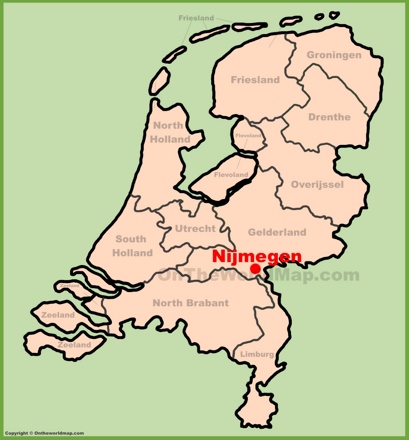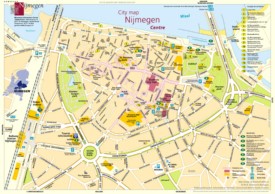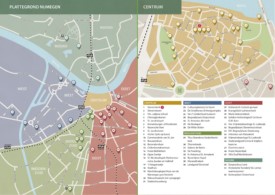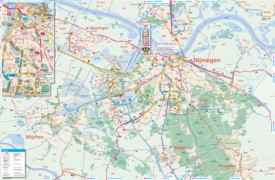Nijmegen Maps
Online Map of Nijmegen
About Nijmegen
Nijmegen, situated in the eastern Netherlands, is the oldest city in the country and the largest city in the province of Gelderland. Founded by the Romans in the 1st century BC, it was initially called Noviomagus, meaning "new market." The city received city rights from the Roman Empire in 98 AD, making it one of the earliest recognized cities in the Netherlands. Today, Nijmegen has a population of approximately 187,000 residents.
The city's strategic location on the Waal River, a distributary of the Rhine, has historically made it an important trading center. During World War II, Nijmegen suffered significant damage from both Allied bombing and German occupation. The city played a crucial role in Operation Market Garden in 1944, one of the largest Allied airborne operations of World War II. The operation's history is preserved in the Liberation Museum located in nearby Groesbeek.
Modern Nijmegen is known for its educational institutions, particularly Radboud University, established in 1923, which hosts approximately 22,000 students and is consistently ranked among the top universities in the Netherlands. The city is also home to important research facilities, including the Max Planck Institute for Psycholinguistics and the Donders Institute for Brain, Cognition and Behaviour.

Notable landmarks include the Valkhof, a park featuring remains of an ancient Roman military camp and Carolingian chapel; the St. Steven's Church, a significant example of Gothic architecture dating back to the 13th century; and the Waalbrug, a major bridge completed in 1936 that spans the Waal River. The city center features the Grote Markt (Great Market Square), surrounded by historic buildings and the Renaissance-style Weighhouse.
Nijmegen hosts several major annual events, including the Four Days Marches, the largest multiple-day walking event in the world, attracting over 40,000 participants from more than 60 countries. The accompanying Seven Days of Nijmegen festival draws over a million visitors each year. The city is also recognized for its commitment to sustainability and was named the European Green Capital in 2018, acknowledging its environmental initiatives and green urban development.
The Facts:Province: Gelderland.
Population: ~ 187,011 (2024).
Maps of Netherlands
Cities of Netherlands
Cities of Netherlands
Provinces of Netherlands




